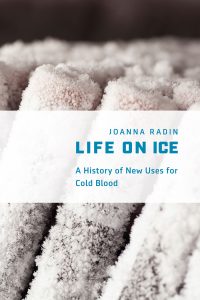The Immortal Life of Henrietta Lacks/Life on Ice

This weekend, The Immortal Life on Henrietta Lacks premieres on HBO, adapted from Rebecca Skloot’s critically acclaimed book, and starring none other than Oprah Winfrey. The story that book tells—how one woman’s cancerous cells, obtained without permission during a 1951 biopsy, went on to become the HeLa cell line, which introduced the idea of the “immortalized” cell (cells that, if properly maintained, can and will reproduce themselves indefinitely—even outside of the human body), and changed biomedical research forever.
Lacks’s story is only part of a larger narrative about the history of biobanking—when, under pressure from Cold War-era atomic survivalism, scientists began stockpiling and freezing blood samples from global indigenous communities—samples believed to hold crucial keys about everything from microbes to genetic evolution—all the while facilitating the birth of the genomic age. Joanna Radin’s Life on Ice: A History of New Uses for Cold Blood unpacks that complex history, reframing the biobank experiments as building blocks for today’s biomedicine, and locating them in their unique technical and social milieu, while offering up an endlessly fascinating digestion of a biological timeline set toward immortality.
From a review of the book in Nature:
[Radin’s] sharply original history focuses on serum collected from indigenous communities and frozen during the cold war. Some samples have had a starry afterlife: one from the Belgian Congo, taken in 1959, later became the oldest trace of HIV/AIDS on record. Radin sweeps from the emergence of cryonics to the rise of genomics — and from burning ethical debates over indigenous rights to ancestral remains.
To read more about Life on Ice, click here.